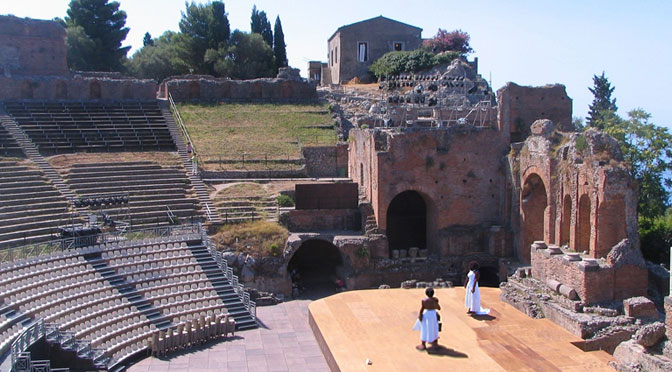Theater in ancient Greece has fascinated scholars, historians, and enthusiasts alike. Not only was it an integral part of cultural life, but it also provided an opportunity to explore some of the deepest questions of human existence. One of the most interesting aspects of ancient Greek theater was the frequent use of nudity. It was a bold and daring choice that often took center stage and was a crucial element in the success of the performances. In this blog, we will explore the function of nudity in ancient Greek theater and why it was such an important part of the theatrical experience.
The use of nudity in ancient Greek theater was not just for shock value, although it certainly had that effect. Rather, it was used as a powerful symbol of vulnerability, a dramatic expression of emotion and physicality. In the play “The Persians” by Aeschylus, for example, the chorus of Persian women is presented naked. This was a deliberate choice, as it was meant to illustrate the horror and terror of war. The nudity was a reminder of the brutality and vulnerability of human life and served to reinforce the themes of the play.
Another reason for the use of nudity in ancient Greek theater was the distinction between the gods and mortals. In many plays, the gods are depicted fully clothed, while the mortals are often either partially or fully nude. This was done intentionally to emphasize the divine nature of the gods and the (limited) mortal nature of the humans. It was also a way to portray the gods as being above the human world, untouchable, and above reproach.
In addition to its symbolic significance, nudity in ancient Greek theater was also used to show the physical beauty and athleticism of the performers. Actors were often chosen for their physical attributes, and audiences were encouraged to appreciate their bodies as much as their acting abilities. This was especially true for the male actors, who were often highly skilled athletes and wrestlers. Their nude bodies were not only a tribute to their physical abilities, but also a spectacle for the audience.
However, not all characters were portrayed nude. Female characters, for example, were almost always dressed modestly or even fully clothed. This is because women were not allowed to participate in public life as much as men were. As a result, they were often relegated to secondary roles in plays, which did not require them to be nude.
The acceptance and perception of nudity in ancient Greek society differed from modern standards. Greek society viewed the human body as something beautiful and celebrated the physical form. Nudity in theater was therefore widely accepted and considered an integral part of the art form.
The use of nudity in ancient Greek theater was complex and multifaceted. It was not merely a spectacle for amusement, but rather a meaningful and powerful aspect of the theatrical experience. It served as a symbol of vulnerability, a means of distinguishing between the divine and the mortal, a celebration of bodily prowess, and a means of promoting community. The importance of nudity in ancient Greek theater is a testament to the enduring power of theater as a medium of artistic expression and cultural exchange. As aspiring actors and actresses, we can learn much from the ancient Greeks and continue to strive to create meaningful and impactful theatrical experiences.

